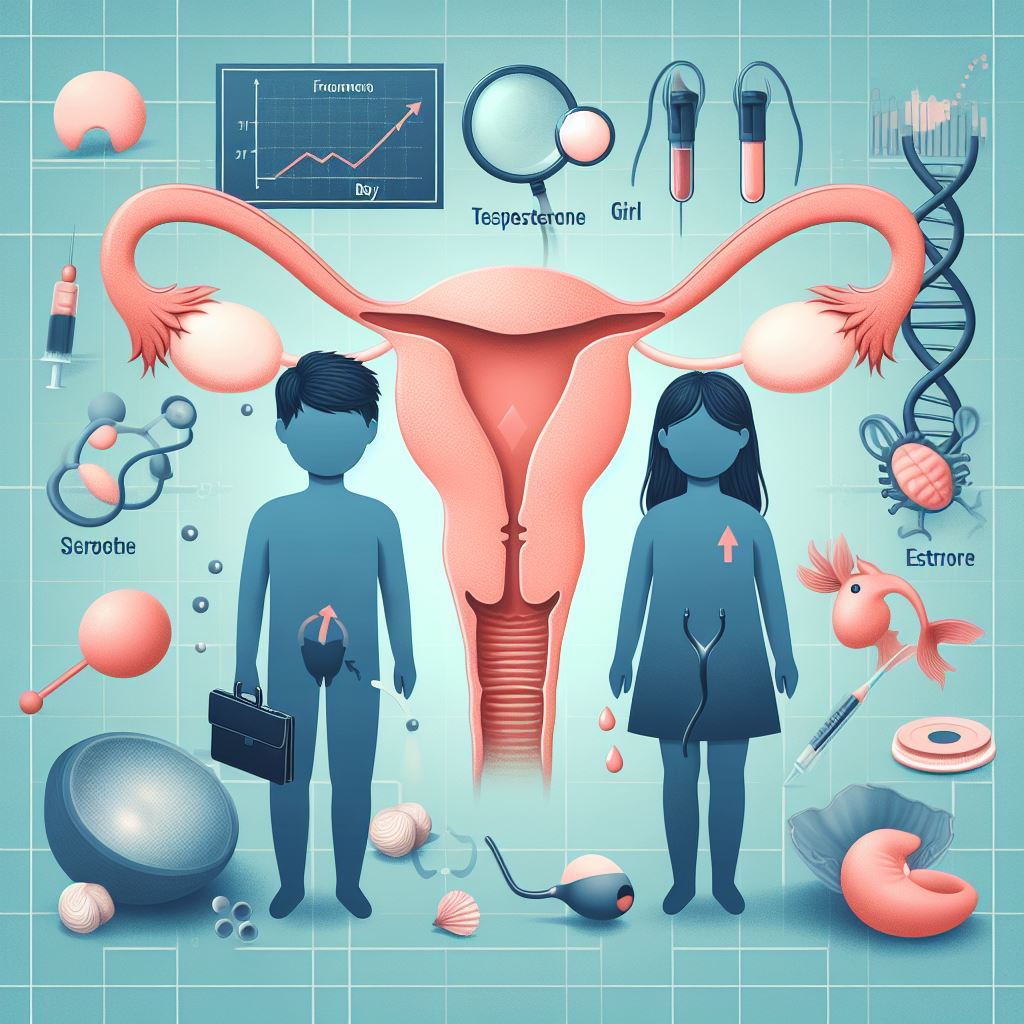Introduction: The primary determinant of mammalian sex has long been considered the chromosomal constitution (XX for females, XY for males). However, recent research suggests a more nuanced scenario where pre-implantation hormones may play a critical role in early sexual differentiation, even before sex chromosomes exert their effects. This hypothesis proposes that the variable values of testosterone and estrogen in the fetal-embryonic environment at the time of conception influence the probability of male or female development in mammals.
Hypothesized Mechanism:
Hormonal Milieu at Conception: During fertilization and early embryo development, both maternal and paternal hormones present in the fallopian tubes and uterine fluid create a dynamic hormonal milieu. Maternal estradiol and progesterone levels, and paternal testosterone transported with sperm, fluctuate with menstrual cycles and environmental factors.
Differential Sensitivity to Hormones: The developing embryo possesses tissues sensitive to both testosterone and estrogen, even before sexual differentiation begins. These tissues, like the genital ridges and hypothalamus, express steroid hormone receptors with varying affinities and response pathways.
Testosterone-Driven Masculinization: High levels of testosterone at conception, either from paternal contributions or maternal pre-ovulatory surges, could enhance the activity of androgen receptors in the embryo. This could trigger masculinizing pathways, promoting male genital development and suppressing female programming.
Estrogen-Mediated Feminization: Elevated estrogen levels, potentially originating from maternal sources, could activate estrogen receptors, promoting female differentiation. This could involve suppression of male programming while enhancing growth of female reproductive structures.
Hormonal Thresholds and Probabilities: The sex of the offspring likely results from a complex interplay between testosterone and estrogen levels, their interplay with other hormones, and the timing of exposure. There may be threshold levels for each hormone, where exceeding them increases the probability of one sex over the other.
Predictions and Testable Implications:
If this hypothesis is correct, then the sex ratio of offspring could be skewed by fluctuations in maternal and paternal hormone levels around conception. Periods of high maternal estrogen or low testosterone prior to ovulation might favor female births, while the opposite may favor male births.
Paternal factors like stress or diet, known to influence testosterone levels, might indirectly influence offspring sex ratio.
Maternal hormonal profiles, determined through blood tests or indirect measures like digit ratio, could potentially predict the sex of the offspring with improved accuracy, beyond simple chromosomal analysis.
Animal models with controlled hormonal manipulations during fertilization and early embryonic development could provide direct evidence for the hypothesized mechanisms.
Further Investigations:
Elucidating the specific molecular pathways by which testosterone and estrogen influence early sexual differentiation in mammals.
Examining the role of other hormones and environmental factors in modulating the effects of testosterone and estrogen.
Developing biomarkers based on maternal or paternal hormonal profiles to predict offspring sex with greater precision.
Conclusion:
This hypothesis proposes a novel perspective on mammalian sex determination, suggesting that early hormonal exposure plays a crucial role in tipping the balance towards male or female development. Investigating this hypothesis has the potential to revolutionize our understanding of sex determination and its potential links to various biological and health outcomes.
Disclaimer: This hypothesis is purely theoretical and requires extensive research and experimentation for validation. While it presents a framework for further investigation, it is important to acknowledge the complex and multifaceted nature of sex determination in mammals. Moreover, Google's Artifical Intelligence has been used to generate this paper using all the information available to it in its model.

No comments:
Post a Comment